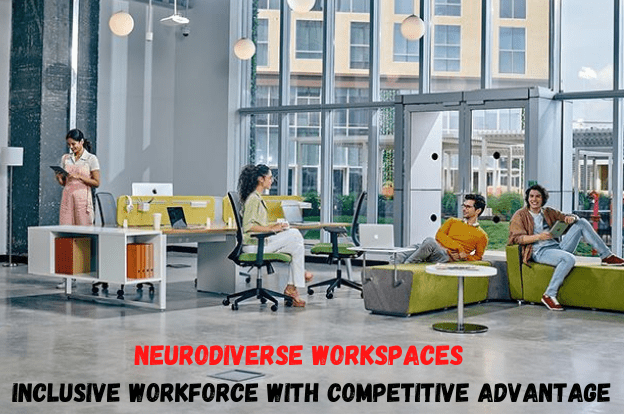If you are a champion of workplace diversity and have been contemplating exploiting the vast untapped potential of an ‘inclusive workforce’, then this article talks about why you might just be thinking right! But what exactly is this term ‘neurodiversity’ and can it really benefit your organization is for you to decide. This article delves into the complex and intriguing world of neurodiversity and how it can contribute to the workplace.
What is Neurodiversity
Neurodiversity refers to variation in neurocognitive functioning - an umbrella term that encompasses neurocognitive differences such as autism, attention deficit hyperactivity disorder (ADHD), dyslexia, Tourette’s, anxiety, obsessive-compulsive disorder, and other disorders as well as ‘normal’ neurocognitive functioning, or neurotypicality. Being neurodiverse simply means having a brain that’s “wired differently”. Neurodiverse individuals have intellectual, developmental, or learning disorders when compared to neurotypical folks, which makes it difficult for them to express and adjust themselves socially. For instance, autistic individuals may have the inability to hold or initiate a conversation, may have poor eye contact, lack of social cues such as smiling and responding, or usage of repetitive language. Also, some of these individuals can be hyper-sensitive to light or noise which can be regular to normal employees. In return for these shortcomings, they are blessed with superior technical and mathematical abilities with a strong propensity for detail and can focus on complex tasks for an extended period - patterns that you won’t typically find in a neurotypical individual.
What Neurodiverse people bring to the table?
Neurodiverse people have talents, perspectives, and skills that can add a distinct variety to the work environment. The European Union estimates a shortage of 800,000 IT workers by 2020[1], specifically in fields including data analytics and IT services implementation - jobs with tasks that fit well with the unique abilities of some neurodiverse people, which includes those with autism, dyspraxia, dyslexia, and attention deficit hyperactivity disorder (ADHD).
Promoting ‘Inclusion’ at the workplace
Neurodiversity should ideally be an essential part of any organization’s talent strategy. However, in reality, organizations find it much easier to hire individuals who can gel into the existing way of things rather than hiring an ‘extraordinary’ resource and making critical organizational changes for their accommodation. What they underestimate is the fact that by embracing neurodiversity in the workplace, they can gain competitive advantages in many areas viz. productivity, innovation, organizational culture, and talent retention. In fact, a growing number of prominent companies such as SAP, Hewlett Packard Enterprises, Microsoft, Ford, and Deloitte, have been setting good examples by creating programs & processes to hire and accommodate people with autism. These companies acknowledge that people on the autism spectrum often come with special skills and perspectives that can open up diverse possibilities for both - organizations and them.
How can we design spaces to support Neurodiversity at work?
The typical challenges that neurodivergents could face in the workplace include Distractions, Sensory Stimulation & Wayfinding. To make things friendlier for them, there are some architectural changes that can be done such as:
-
- Tweaking the lights a little - Using desk lamps that mimic natural sunlight instead of the overhead lights can help light-sensitive autistic individuals focus better
- Reserving separate distraction-free workspaces - Open office plans can be quite distracting even for neurotypical individuals and more so for neurodiverse ones leading them to feel overwhelmed. For such, you can assign cubicles or an individual office workstation amid the open space.
- Helping with day to day organization - For those struggling with concentration or organizational skills, extra resources such as Post-it notes, a whiteboard, or extra filing can help.
Additionally, organizations can conduct programs to bring awareness, educate, and sensitize neurotypicals on working with neurodivergent employees and engaging them. Training neurotypicals on how to adjust to or ignore certain inherent behaviours can also prove to be highly beneficial. Designing for neurodiversity and inclusion can not only unleash new opportunities for business but is also a social and moral imperative upon companies.
If you are looking to redesign your office with contemporary furniture solutions to suit a neurodiverse workforce, contact HNI India - the manufacturers & dealers of ergonomic and state of the art work from home & office furniture. To explore our range of ergonomic office furniture, visit our HNI India website today!
